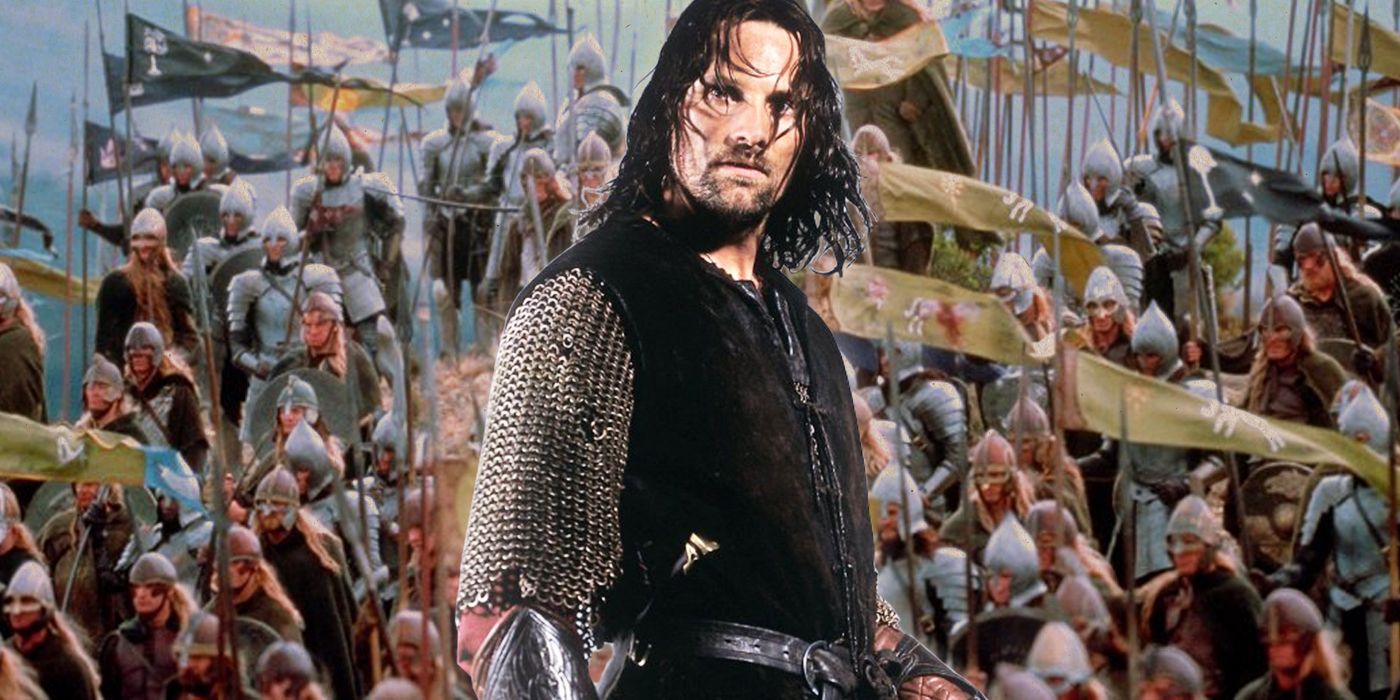J.R.R. Tolkien’s captivating world-building has etched The Lord of the Rings as one of the most impressive fantasy franchises ever to grace all forms of media. The exceptional culmination of Tolkien’s lore into two three-part movie series and an ongoing TV series is a true form of the fantasy genre that is still enjoyed after more than two decades. Most of Tolkien’s cinematic adaptations have focused on the Second and Third Ages. These were troubling times as both ages have been plagued by Sauron’s darkness in one way or the other. Fans must know the events of the Third Age because these years are covered in The Lord of the Rings Trilogy. Tolkien explored the turbulent times that the beings of Middle-earth had to face through the first three Ages. Elves, Dwarves, and Orcs were more privileged in enjoying their isolated freedoms, but it was Men who received the short end of the stick. The Age of Arda, or the Third Age, began with Sauron’s first defeat and lasted for 3021 years, with Gandalf, Galadriel, and the rest departing to the Undying Lands. The era that came after long years of battle and the scourge of Sauron is known as the Fourth Age or the Age of Men. Even though Tolkien’s work around the Fourth Age isn’t as extensive as the rest, it does signify an essential aspect of the lore. The Age of Men brings to light a world that’s less about fantasy elements and more about the practicality of growth and peace that comes after the final battle.The Great War was more of mortality’s last stand than anything else. For the most part, the Third Age is about the descent of Elven rule and the rise of Men, which lasted thousands of years even after Isildur lost the One Ring. The countless quests to conquer and regain Gondor signifies the key role Men played in the power game more than any other kind. By the time Nazgul and the Orcs started to reappear near the Misty Mountains, Gondor had become central power while the Elves withdrew deeper into their abode. With the Dwarves already meeting their demise due to greedy mining of mithril, the only ones with their fate tied to Sauron’s rise were Men. As fate would have it, the true Age of Men came after the One Ring was destroyed, and Middle-earth was pushed into centuries of peace where no enemy of “Mankind” remained as they recovered from the damages of the war and entered an era with little to no magic.
J.R.R. Tolkien’s captivating world-building has etched The Lord of the Rings as one of the most impressive fantasy franchises ever to grace all forms of media. The exceptional culmination of Tolkien’s lore into two three-part movie series and an ongoing TV series is a true form of the fantasy genre that is still enjoyed after more than two decades. Most of Tolkien’s cinematic adaptations have focused on the Second and Third Ages. These were troubling times as both ages have been plagued by Sauron’s darkness in one way or the other. Fans must know the events of the Third Age because these years are covered in The Lord of the Rings Trilogy.
Tolkien explored the turbulent times that the beings of Middle-earth had to face through the first three Ages. Elves, Dwarves, and Orcs were more privileged in enjoying their isolated freedoms, but it was Men who received the short end of the stick. The Age of Arda, or the Third Age, began with Sauron’s first defeat and lasted for 3021 years, with Gandalf, Galadriel, and the rest departing to the Undying Lands. The era that came after long years of battle and the scourge of Sauron is known as the Fourth Age or the Age of Men. Even though Tolkien’s work around the Fourth Age isn’t as extensive as the rest, it does signify an essential aspect of the lore. The Age of Men brings to light a world that’s less about fantasy elements and more about the practicality of growth and peace that comes after the final battle.
The Great War was more of mortality’s last stand than anything else. For the most part, the Third Age is about the descent of Elven rule and the rise of Men, which lasted thousands of years even after Isildur lost the One Ring. The countless quests to conquer and regain Gondor signifies the key role Men played in the power game more than any other kind. By the time Nazgul and the Orcs started to reappear near the Misty Mountains, Gondor had become central power while the Elves withdrew deeper into their abode. With the Dwarves already meeting their demise due to greedy mining of mithril, the only ones with their fate tied to Sauron’s rise were Men. As fate would have it, the true Age of Men came after the One Ring was destroyed, and Middle-earth was pushed into centuries of peace where no enemy of “Mankind” remained as they recovered from the damages of the war and entered an era with little to no magic.
#Lord #Rings #Fourth #Age #Important
Note:- (Not all news on the site expresses the point of view of the site, but we transmit this news automatically and translate it through programmatic technology on the site and not from a human editor. The content is auto-generated from a syndicated feed.))



